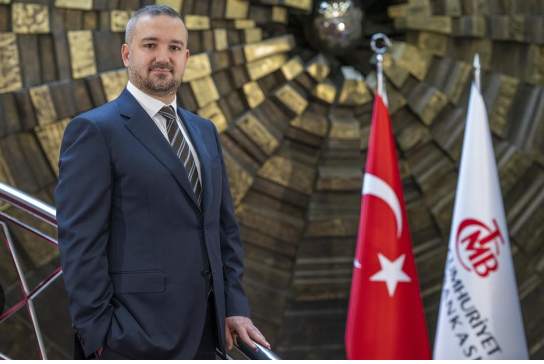Intro
The Central Bank (CBRT) maintained the policy rate (50%) and the range between borrowing and lending rates (600 bps) as expected. They remain cautious about the risks on inflation outlook. On financial stability concerns, they aim to sterilize excess TL liquidity stemming from the most recent domestic and foreign demand for TL financial assets. In this respect, the CBRT raised the TL required reserve ratios, requiring much higher levels for KKM deposits. They aim to disincentivize KKM deposits and facilitate conditions to speed up an exit.
Last not but the least, they imposed a monthly cap of 2% on FC credits, similar to TL commercial lending, in order to support financial stability, reduce excess TL liquidity and prevent any opportunity apart from the companies’ commercial activity. Overall, the CBRT targets to eliminate the most recent downside pressure on TL deposit rates because of the decline in ON TL rates on top of excess TL liquidity in the market. This will add new pressure on TL lending rates and since FC lending growth is also capped, commercial activity will likely be put under further pressure.
Forecasts
Since aggregate demand is still stronger than supply, we will follow how the mix of these policies will affect the inflation outlook. We maintain our view that inflation is likely to get closer to the upper bound of the CBRT forecasted range (42%) and this will provide a limited room to start easing with very gradual steps in 4Q24. Yet, lagging fiscal measures and macro-prudential policies on retailer spending availability might delay the easing cycle to later.
What is happeninig with KKM? (FX-insured TL deposits)
Since almost all of the existing KKM is the original FC savers, the CBRT would be planning to strengthen its reserves as fast as possible in order to exit from the scheme fast as well, given the more favorable TL outlook in the very short term. Therefore, it seems the CBRT will stick to heavy FC reserves purchases during high tourism season and substantial capital inflows of the foreign investors ($55bn accumulation of reserves since election vs. $35bn decline of swaps with local banks).
This is why they prefer to absorb excess TL liquidity via a more concrete way, increasing TL required reserve ratios across-the-board. We calculate a sterilization of around TL 500bn, which will help eliminate the most recent downside pressure on TL deposit rates because of the decline in ON TL rates towards the CBRT borrowing rate (47%).
With this, they will also attain more or less a stable lira, where they might be targeting to support tourism and exports activity.
TL rates to go up, commercial activity to decelerate
Nonetheless, this will add new pressure on TL lending rates and since FC lending growth is also capped from now onwards, commercial activity will likely be put under further pressure as well. We nowcast that aggregate demand remains stronger than supply and retailers’ spending availability on top of wealth effects and card spending maintains a resistance against a clearer deceleration in consumption. It will be key to suppress consumption before squeezing commercial activity further since inflation expectations stay highly diverged to the upside (professional forecasters’ 40-50%, corporates’ 50-60% and households’ 80-120% for year end).
Transmission Mechanism Still Broken
The monetary stance is already much tighter but the monetary transmission has not been effective enough to decelerate domestic demand more clearly. We understand one of the main obstacles to strengthen the transmission mechanism is the KKM accounts and differentiated TL deposit rates in the market.
We believe other complementary macro-prudential measures aiming to suppress consumption by reducing the availability of spending via cards and to squeeze wealth effects become essential in order not to lose time to anchor inflation expectations. Besides, keeping financial conditions tight for longer will be needed to start a sustained path to unwind current regulations (firstly credit growth caps, later deposit rules) in order to strengthen the monetary transmission mechanism.
We maintain our view that inflation is likely to get closer to the upper bound of the CBRT forecasted range (42%) and this will provide a limited room to start easing with very gradual steps in 4Q24.
Yet, lagged effects of most recently announced fiscal measures and lacking macro-prudential policies on retailer spending availability might delay the easing cycle to later.
BBVA Garanti
Follow our English language YouTube videos @ REAL TURKEY: https://www.youtube.com/channel/UCKpFJB4GFiNkhmpVZQ_d9Rg
And content at Twitter: @AtillaEng
Facebook: Real Turkey Channel: https://www.facebook.com/realturkeychannel/
